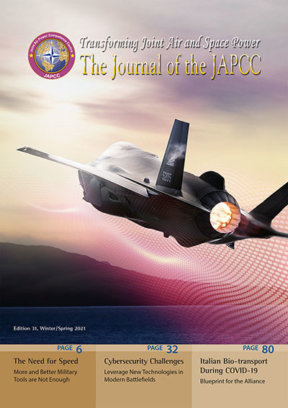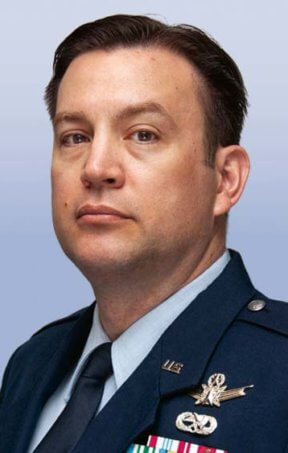‘… with great power there must also come – great responsibility!’1
Introduction
The United States (US) Military, particularly its Air Force and Army, are pursuing technical capabilities to facilitate Command and Control (C2) in multiple domains and/or across all domains … a tremendous capability (great power) indeed. While these efforts are not being pursued exclusively in the US, the US is currently spearheading the discussion and research into these types of capabilities and in the process attempting to gain a clearer understanding of what this means for future military operations. This is particularly relevant for NATO, as other member nations and NATO-aligned organizations have begun exploring concepts associated with Multi-Domain Operations (MDO) and Joint All-Domain Operations (JADO). One aspect of specific importance to the Alliance as it forges ahead with developing technologies associated with improved C2 capability will be to avoid over fixation on emerging technologies to the extent that they overlook the legal authorities associated with C2 … the responsibility half of the coin.
This article explores some of the perceived seams between the emerging technologies associated with Joint All-Domain Command and Control (JADC2), and related concepts, and the current command structure within NATO (specifically Allied Command Operations [ACO] and Allied Air Command) regarding the differences between capabilities and authorities. This article will rely on NATO ACO published definitions and descriptions of the command structure to serve as a basis for the discussion.
The Current Structure
‘ACO is a three-tier command with headquarters and supporting elements at the strategic, operational and tactical levels. It exercises C2 of static and deployable headquarters, as well as joint and combined forces across the full range of the Alliance’s military operations, missions, operations and tasks.’2
At the top of the ACO structure is Supreme Headquarters Allied Powers Europe (SHAPE) which serves as ACO’s strategic headquarters. ‘Its role is to prepare, plan, conduct and execute NATO military operations, missions and tasks in order to achieve the strategic objectives of the Alliance.’3
The next level below SHAPE is considered the operational level and consists of three standing Joint Force Commands (JFC); one each in Brunssum (Netherlands), in Naples (Italy), and in Norfolk (US). ‘All stand ready to plan, conduct and sustain NATO operations of different size and scope. Effectively, they need to be able to manage a major joint operation either from their static location, or from a deployed headquarters when operating directly in a theatre of operation.’4
In theory, any of the JFCs would be supported by the third tier, or the tactical level. This level is comprised of Single Service Commands (SSC), one each for Air, Land, and Sea. ‘These service-specific commands provide expertise and support to the Joint Force Commands.’5
However, ‘they report directly to SHAPE and come under the command of SACEUR.’6 As will be discussed later, this arrangement can create interesting, possibly convoluted, interactions when the JFC Commander strives to align forces for a specific mission.
As mentioned, there is an SSC for Air which is located at Ramstein Air Base in Germany in the form of Headquarters Allied Air Command (HQ AIRCOM). The role of AIRCOM is to ‘plan and direct the air component of Alliance operations and missions, and the execution of Alliance air and missile defence operations and missions.’7 Far from just a headquarters, AIRCOM ‘with adequate support from within and outside the NATO Command Structure can provide command and control for a small joint air operation from its static location, i.e., from Ramstein or can act as Air Component Command to support an operation which is as big or bigger than a major joint operation.’8 Additionally, HQ AIRCOM has three subordinate air C2 elements: ‘two Combined Air Operations Centres (CAOC) and a Deployable Air Command and Control Centre (DACCC). The air elements are also structured in a more flexible way to take account of the experience gained in NATO-led operations.’9
The Structure in a Crisis
When it comes to executing specific operations, the JFC has, at least in theory, some flexibility in how it organizes its assigned and/or attached forces:
‘The JFC’s mission and operational approach, as well as the principle of unity of command and a mission command philosophy, are guiding principles to organize the joint force for operations. Joint forces can be established on a geographic or functional basis. JFCs may centralize selected functions within the joint force but should not reduce the versatility, responsiveness, and initiative of subordinate forces. JFCs should allow Service and special operations tactical and operational forces, organizations, and capabilities to function generally as they were designed.’10
Additionally,
‘When JFCs organize their forces, they should also consider the degree of interoperability among Service components, with multinational forces and other potential participants. Complex or unclear command relationships are counterproductive to synergy among multinational forces. Simplicity and clarity of expression are essential.’11
This seems to synchronize with HQ AIRCOM’s approach:
‘For crisis response operations, NATO’s Air Command and Control structures are based on standing up a Joint Force Air Component – a command and control centre that plans and executes the delivery of NATO Air Power across the entire spectrum of joint operations. Allied Air Command is responsible for the standing up of the NATO Command Structure’s Joint Force Air Component that will be specifically tailored in size for any NATO operation.’12
As long as the JFC and SSC leadership agree upon an organizational structure, there are no issues. However, since the SSCs report to SACEUR, the JFCs can find themselves in situations where their desired command structure might not be implemented. In the relatively permissive environments and operations NATO has encountered in recent decades, any differences have had little to no operational impact. However, in a major operation against a peer or near-peer adversary (or adversaries), any differences could carry heavy consequences.
Inclusion of JADC2 Capability
In June 2020, the US Air Force published a doctrine that clearly defined JADO and JADC2:
JADO
‘Comprised of air, land, maritime, cyberspace, and space domains, plus the EMS [electromagnetic spectrum]. Actions by the joint force in multiple domains integrated in planning and synchronized in execution, at speed and scale needed to gain advantage and accomplish the mission.’13
and
JADC2
‘The art and science of decision-making to rapidly translate decisions into action, leverage capabilities across all domains with mission partners to achieve operational and informational advantage in both competition and conflict.’14
The doctrine also provides a vision, which ‘calls for connecting distributed sensors, shooters, and data from all domains to joint forces, enabling coordinated exercise of authority to integrate planning and synchronize convergence in time, space, and purpose.’15
This vision requires an advanced modern communications infrastructure. To that end, the CSAF [Chief of Staff of the Air Force] singled out a FY2021 [fiscal year 2021] budget proposal request for USD 435 million for a digital architecture and cloud architecture ‘to be able to not only connect the Air Force, but to connect the joint force.’16
However, it is important to recall that ‘command is the authority a commander in the armed forces lawfully exercises over subordinates by virtue of rank or assignment. Accompanying this authority is the responsibility to effectively organize, direct, coordinate, and control military forces to accomplish assigned missions.’17 Hence, while the US Air Force is pursuing technologies to C2 across all operational domains, it does not possess the authority to C2 across all domains. Therefore, and from a NATO perspective, neither does HQ AIRCOM.
The authorities of command for an operation are delegated from SACEUR to the assigned JFC. With the JFC possessing the technical capability to command across all domains, the question arises as to what role the SSCs (including AIRCOM) would provide, other than expertise; expertise which could be re-assigned to the standing JFCs.
One could argue whether SACEUR needs to maintain three standing JFCs, particularly if that capability resides at SHAPE? While there is some merit to this perspective, it must be remembered that the SSCs do not possess the authority across domains; these authorities reside with SACEUR, other than when delegated to the JFCs.
Of course, the elephant in the room during this discussion is politics. SHAPE, the JFCs, and the SSCs reside in seven different NATO nations. So, even if there is agreement that NATO has too many permanent organizations, given that the ability to C2 across domains resides similarly at each, the host nations would most likely consider ‘the other’ organizations as redundant rather than those they themselves host.
Conclusion
JADC2 creates the possibility for operational and even financial streamlining, yet faces hurdles from the services and, in NATO’s case, national political parochialism. The US Air Force’s idea for JADC2 is ‘greater decentralized execution, a higher degree of delegated authority, and less dependence on central planning and mission direction than recent, low-intensity conflict operations.’18 For NATO, with a top-heavy command structure, the challenge to not only delegate authorities but also reduce bureaucracy may present a higher hurdle than the integration of the technologies which enable JADC2.
Still, NATO possesses an interoperability policy, which aims to ensure the ability of the Alliance to operate together effectively to achieve mission goals and objectives. Indeed, ‘Interoperability reduces duplication, enables pooling of resources, and produces synergies among all Allies, and whenever possible with partner countries.’19 Key to reducing duplication within NATO will be examining ways the organization can reduce bureaucratic infrastructure, while maintaining only those organizations with the ability and authority to conduct operations utilizing emerging technologies. NATO may soon have at its disposal capabilities which will greatly enhance its ability to ensure the collective defence of its member nations, but more importantly will it also possess the ability to act efficiently in light of these advancements?












